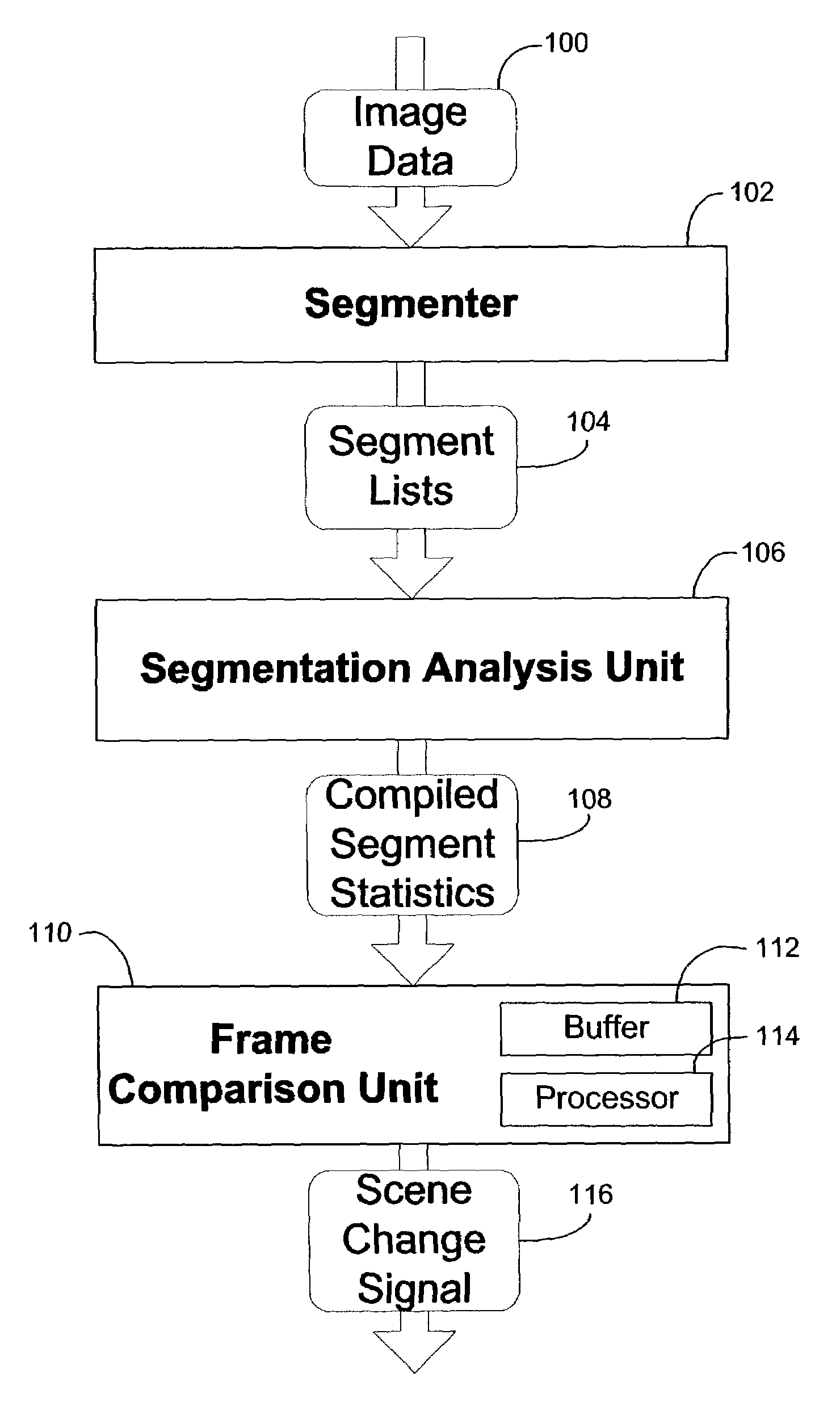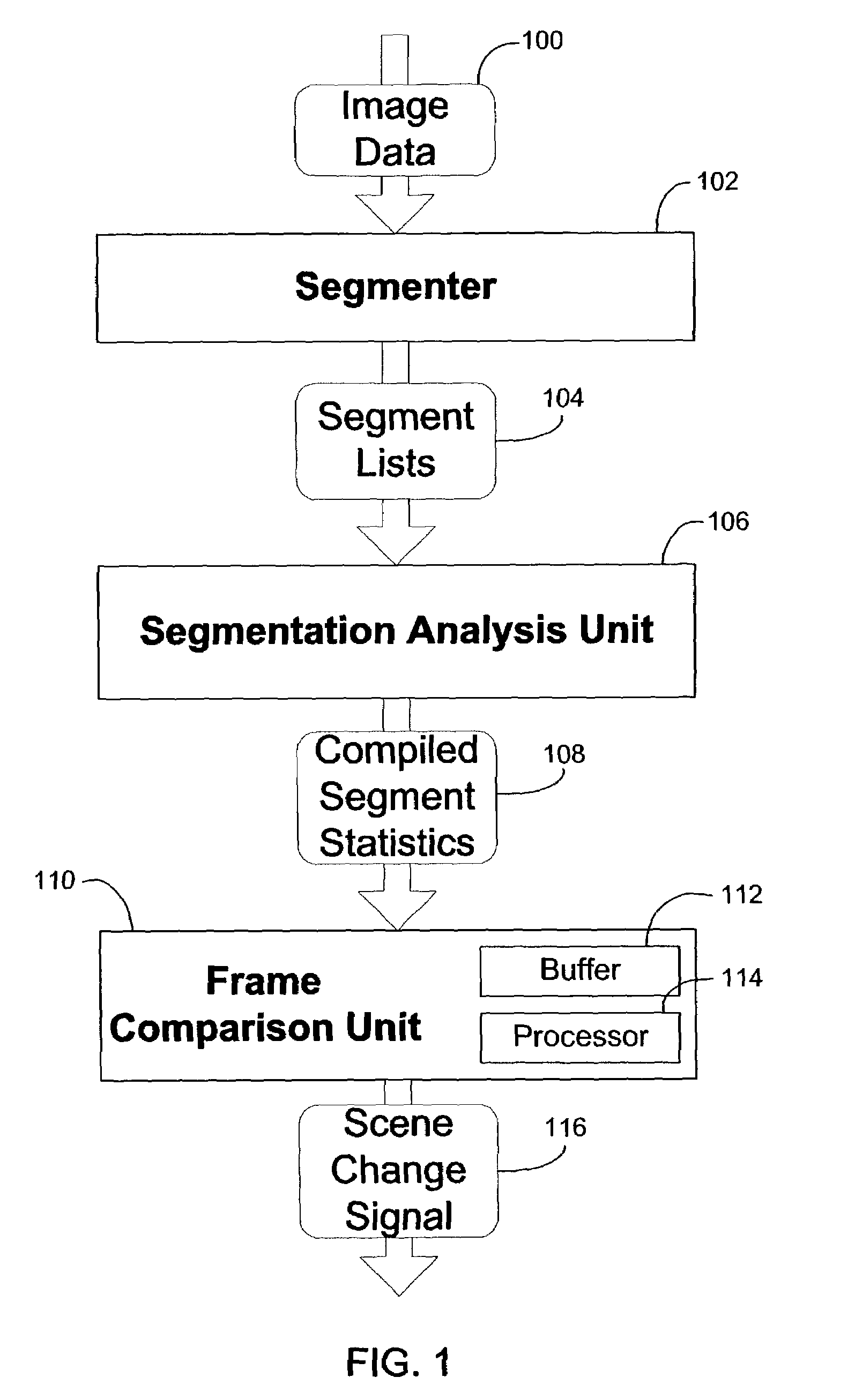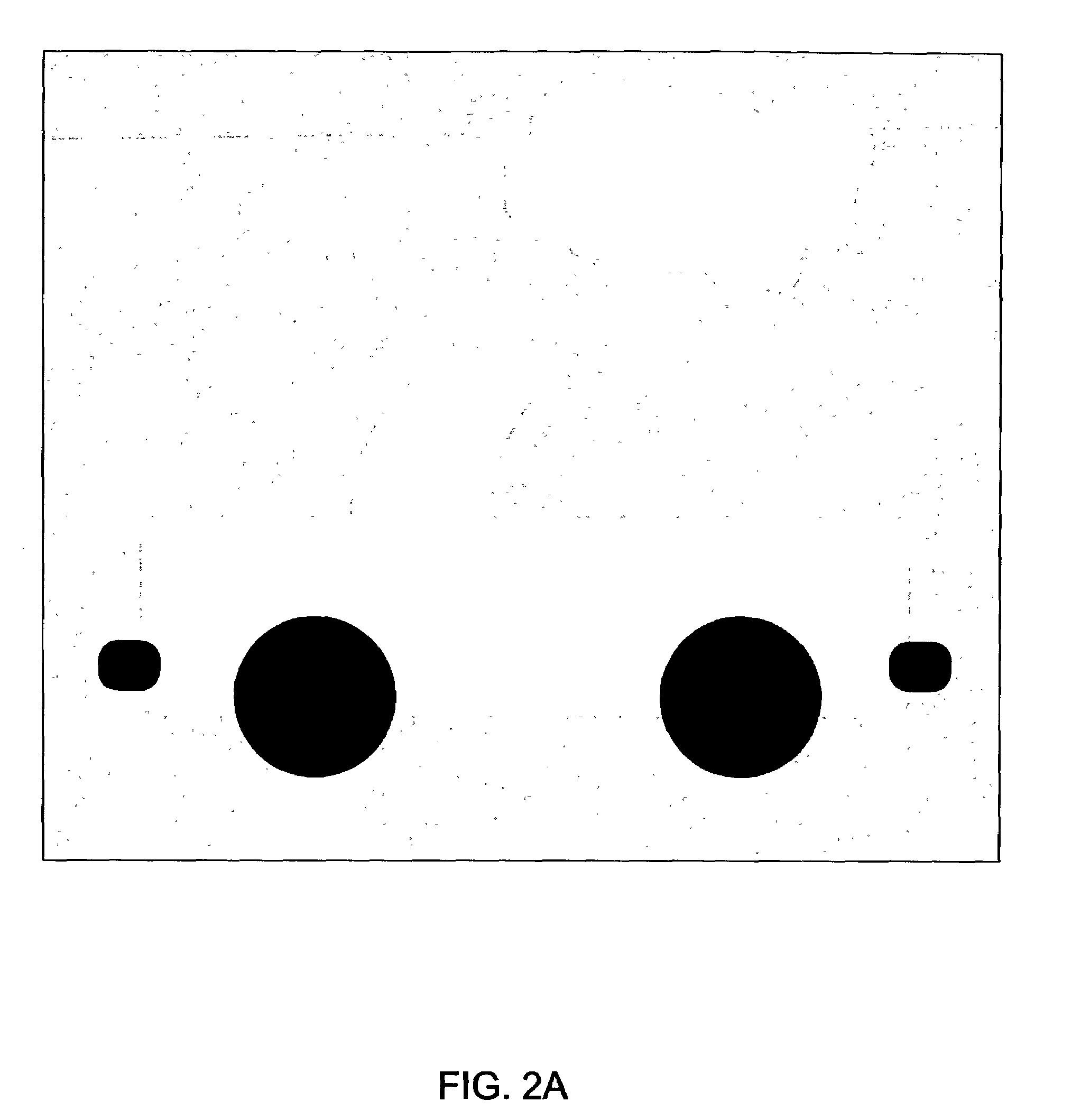Scene change detection by segmentation analysis
- Summary
- Abstract
- Description
- Claims
- Application Information
AI Technical Summary
Benefits of technology
Problems solved by technology
Method used
Image
Examples
Embodiment Construction
1. Introduction
[0013]As discussed above in the Description of Related Art, video compression strategies are known to provide data compression using intra-frame and inter-frame compression. Of particular interest, inter-frame compression involves the construction of later frames using their similarities to other nearby frames whenever possible. Hence, the need to recognize new scenes or sharp changes in image data arises. When a scene change occurs, attempts to construct the next frame as a variation on any preceding frames will typically fail. Instead, new full frame data should be transmitted for new scenes. Hence, failure to detect scene changes is a problem that may result in noticeable error in later frames. On the other hand, false positive identifications of scene changes are also problematic because transmitting such full frame data is costly in terms of bandwidth. Thus, the need exists to accurately detect real scene changes while avoiding detections of smaller variations in...
PUM
 Login to View More
Login to View More Abstract
Description
Claims
Application Information
 Login to View More
Login to View More - R&D
- Intellectual Property
- Life Sciences
- Materials
- Tech Scout
- Unparalleled Data Quality
- Higher Quality Content
- 60% Fewer Hallucinations
Browse by: Latest US Patents, China's latest patents, Technical Efficacy Thesaurus, Application Domain, Technology Topic, Popular Technical Reports.
© 2025 PatSnap. All rights reserved.Legal|Privacy policy|Modern Slavery Act Transparency Statement|Sitemap|About US| Contact US: help@patsnap.com



